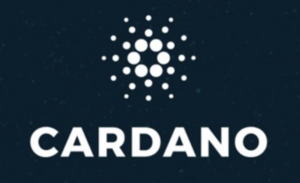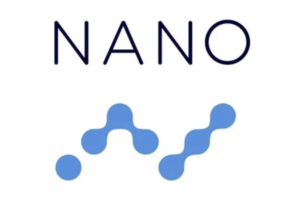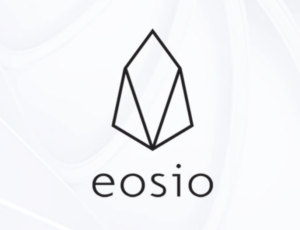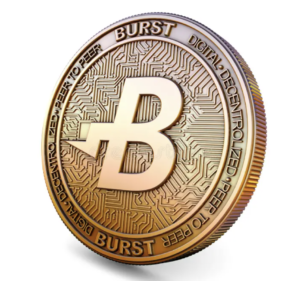What is Sustainable Cryptocurrency? In simple terms, it uses a smaller carbon footprint than the more notable cryptocurrencies out there. The simple definition of cryptocurrency is a digital currency in which transactions are verified and records maintained by a decentralized system using cryptography, rather than by a centralized authority. There are more than 4,500 mineable coins and tokens in existence today. I’ve done a little research, along with thousands of others about which cryptocurrency might currently be the most sustainable crypto.
It is often quite difficult actually. What makes any coin or token “greener” than another? The smaller ones naturally have a lower energy footprint because they have fewer transactions. But what do you think would happen if you scaled them up? They would most likely be just as bad as some of the top coins.
However, some cryptocurrencies are just more energy efficient than Bitcoin. Bitcoin relies on ‘Proof of Work’ which involves large amounts of calculations, in turn, involving processing power, to produce a SINGLE coin. Cryptocurrencies that use ‘Proof of Storage’ or ‘Proof of Stake’ use far less energy, thus allowing them to be more sustainable cryptocurrency.
As Bitcoin’s value increases, the climate suffers, making the need for sustainable cryptocurrency more necessary than ever.
Market progress also plays a large role within the energy absorption of cryptocurrencies. In many cases, those market dips that drop the price of Bitcoin, Ethereum, or other big players lead to miners backing off or even turning off their mining devices. It is simply not profitable to run their mining equipment at that price.
Back in November 2018 the estimate was that Ethereum’s miners more than halved their energy expense in under 20 days because the price dropped. Now, as the price of Ethereum is rising once again in 2021, so has their energy expense.
You can see from the Bitcoin and Ethereum examples that the more energy it takes to mine the coin, the less “sustainable”. It does not decrease it’s value, because to object of this article here is to learn about sustainablity. What makes a crypto sustainable and and why.
So, which cryptocurrencies do you think have an attempt at being more sustainable than another? I’ve read some articles, searched the internet, talked with friends and family members. Here are a few of the my top picks of what I consider “sustainable” cryptocurrency or “green” cryptocurrency, however you choose to refer to the category!
SUSTAINABLE CRYPTOCURRENCY
SolarCoin (SLR)
SolarCoin features a fresh style to cryptocurrency, producing 1 Solarcoin for each Megawatt hour accrued from solar technology. It is global, localized, and autonomous of any government. You can spend and trade SolarCoin a bit like other cryptocurrencies. The key difference is that the basis aims to encourage real-world eco-friendly activity: verifiably generated solar power. Think of SolarCoin as a helpful thanks to quickly offset the cost of putting in a solar battery.
BitGreen (BITG)
BitGreen was created due to the fact that people mining BITCOIN were creating such a huge carbon imprint and impacting the environment with mining facilities. It is a community-driven action and energy-efficient alternative to proof of labor approval cryptocurrencies. The company created a non-profit foundation to oversee the upkeep of the BitGreen project and uses a low-energy Proof of Stake algorithm.
BitGreen incentivizes eco-friendly actions, with users ready to earn BITG by, for instance, carpooling on a ride-hailing app, buying eco friendly coffee, and volunteering. There are lots of ways to earn BITG; for instance, ‘staking’, employing a desktop wallet or building a governing hub. BitGreen coins are usable on goods and services through BitGreen’s members or traded on ProBit Exchange, Mercatox, STEX, and Crex24 exchanges.
Cardano (ADA)
Cardano is naturally more energy efficient than Bitcoin because it uses a ‘Proof of Stake’ approval mechanism where those participating within the currency buy tokens to hitch the network. In some ways it is similar to Ethereum, but without the excessive bloat related to the latter token. This allows Cardano to share to satisfy increased demands for the cryptocurrency, without trading off on speed or efficiency.
The Cardano functionality is mainly digital but is also useful for electronic contracts, electronic apps, and other purposes. Bitcoin is pretty slow at 7 transactions a second, where as Cardano can manage 1000 per second. That is lightning speed, compared to Bitcoin.
Stellar (XLM)
The Stellar network was released in 2014 as a fork from Ripple with the goal to be a bridge between the more traditional banking entities and digital currencies. Stellar does not charge fees for using the network. They are a serious alternative to PayPal as they continue to enable faster, easier, and more affordable cross-asset and cross-border transactions.
Through the Stellar network, you’ll exchange US Dollars, Bitcoin, Pesos, Yen, and just about any currency traditional or crypto. The Stellar network’s token is the Lumens. You can use these to facilitate trades on the blockchain-based shared ledger at a fraction of a cent and with great efficiency. This helps in the efforts to lowering their carbon footprint. Institutions and individuals alike are allowed to make lumen tokens to be used on the system. This action has inspired some to use the network for sustainability initiatives like investing in renewable energy.
The key distinctive feature of the Stellar system is its consensus protocol. This SCP is publicly available and depends on verification of exchanges occurring through a group of reliable nodes instead of running through the entire system as a proof-of-work or maybe proof-of-stake algorithm. Stellar is an energy-efficient option to the more traditional mining networks.
You can buy or sell Stellar’s token, Lumens (XLM), on most exchanges, including Binance, Coinbase, Kraken, Bittrex, Bitfinex, Upbit and Huobi.
Nano (NANO)
Nano is different because it is free, fast, and uses a lot less energy than Bitcoin and lots the other larger cryptocurrencies. It is also expandable and light-weight because it doesn’t rely on mining. It uses the energy efficient block lattice technology processing many transactions. Blockchain, on the other hand, only contains the data of transaction started or received.
In fact, Nano has been around since the bottom of 2015 and features a relatively small carbon footprint even now. It is still reliant on the symbol of labor mechanism. The block lattice goes beyond blockchain to make an account-chain for every user on the network. When updating user accounts on the Nano platform, they are updated serially rather than involving an entire linear blockchain. Instead of conflict and delays in the data, Nano involves just the sender and receiver account-chains. It can handle as many as 125 transactions per second.
EOSIO (EOS)
EOSIO is another ‘Proof of Stake’ forum that uses pre-mined EOS tokens. They can be traded on standard cryptocurrency exchanges like Coinbase, Binance, and Kraken. This public blockchain is loved by developers because it’s simple to line up and write applications in many programming languages. It is very elastic and costs nothing.
Burstcoin (BURST)
Burstcoin is possibly one among the foremost environmentally friendly, sustainable cryptocurrencies. It is known for using ‘Proof of Capacity’ instead ‘Proof of Work’ since 2014. Miners get rewards for warehousing their mining stores. Generally, if your computer has a 1 terabyte hard drive, it will hardly use more energy to mine Burst than an idling computer. That makes it pretty efficient!
Also, Burst is the primary blockchain to use Turing-complete smart contracts. They allow for the creation of non-fungible tokens (NFTs) and use in on-chain games. These are Blockchain integrated games. This is a volunteer run network. Simply put, you’ll trade Burst on Bittrex, STEX, and other cryptocurrency exchanges.
THANKS for taking the time to read my article on sustainable cryptocurrency.
Hope this Article has helped you in determining what you feel is a “sustainable cryptocurrency”! I found tons of interesting facts out there. It is hard to put this into perspective for the common reader so I hope I was able to do that for you! This only the tip of the iceberg on sustainable cryptocurrency. There are so many more out there. It is always good to do your own research when making decisions to invest.
Since originally writing this, the crypto market has taken a nose dive. Elon Musk’s criticism of Bitcoin’s environmental implications, led to some pretty severe drops in the market, across ALL crypto coins.









